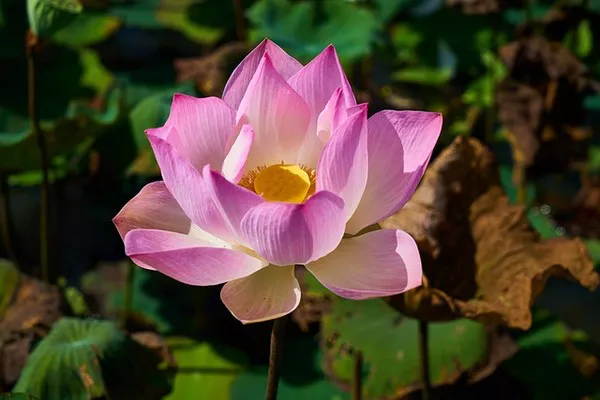The lotus flower, revered for its spiritual and cultural significance, is not only a symbol of purity and enlightenment but also a stunning addition to any garden or aquatic environment. While many enthusiasts prefer purchasing mature lotus plants, there is a unique joy in starting from scratch – planting lotus flower seeds and witnessing the miraculous journey from a tiny seed to a majestic blossom. In this comprehensive guide, we will explore the art of planting lotus flower seeds, providing you with the knowledge and steps needed to successfully cultivate these exquisite aquatic plants.
Choosing the Right Lotus Seeds
Before embarking on your lotus planting journey, it is essential to select the right lotus seeds. Lotus seeds are available in various varieties and colors, and each type requires specific growing conditions. The most common lotus varieties include Nelumbo nucifera (sacred lotus) and Nelumbo lutea (American lotus). Additionally, lotus seeds come in different sizes and colors, so choose a variety that suits your preferences and the environmental conditions of your planting area.
Preparation of Planting Environment
Lotus plants thrive in aquatic environments, and creating a suitable habitat is crucial for their successful growth. Whether you choose to plant lotus seeds in a pond, water garden, or container, the water should be calm, with minimal water movement. Lotus plants prefer still or slow-moving water with a depth of 6 to 12 inches (15-30 cm) for optimal growth.
Select a sunny location for your lotus planting, as these plants require full sunlight to flourish. Adequate sunlight ensures robust growth, vibrant blooms, and healthy foliage. Prepare the planting area by removing any debris, rocks, or competing vegetation that may hinder lotus growth.
Soaking Lotus Seeds
Before sowing lotus seeds, it is crucial to prepare them for germination by soaking them in water. Fill a container with warm water and submerge the lotus seeds for 24 to 48 hours. This soaking process softens the hard seed coat and kickstarts the germination process. Change the water every 12 hours to ensure cleanliness and freshness.
Sowing Lotus Seeds
Once the lotus seeds have been properly soaked, it’s time to sow them. Fill a shallow container or seed tray with a mixture of clay soil and organic matter. Lotus plants prefer heavy, loamy soil with good nutrient content. Plant the lotus seeds about ½ inch (1.3 cm) deep in the soil, spacing them at least 4 to 6 inches (10-15 cm) apart. Gently press the soil over the seeds to ensure good soil-to-seed contact.
Floating Lotus Seeds
Alternatively, you can also plant lotus seeds by allowing them to float on the water’s surface. This method mimics how lotus seeds naturally disperse and germinate in the wild. Place the soaked lotus seeds on the water’s surface, ensuring they are evenly spaced. As the seeds absorb water, they will naturally sink to the bottom and take root in the mud.
Caring for Lotus Seedlings
Once the lotus seeds have been planted, it’s essential to provide proper care for the seedlings as they emerge and grow. Here are some key considerations:
Fertilization: Lotus plants are heavy feeders and benefit from regular fertilization. Use a balanced aquatic fertilizer, and apply it every 3-4 weeks during the growing season. Reduce fertilization in late summer to encourage dormancy.
Water Depth: As the lotus seedlings grow, gradually increase the water depth to the recommended 6 to 12 inches (15-30 cm). This encourages the development of strong and healthy stems and leaves.
Thinning: If multiple seedlings emerge from a single seed, thin them out by removing the weaker ones. This ensures that the remaining seedlings have ample space to grow and thrive.
Protection from Pests: Keep an eye out for pests such as aphids and caterpillars, which may target lotus plants. Use environmentally friendly pest control methods to protect your lotus seedlings without harming the ecosystem.
Winter Care: In colder climates, lotus plants may enter dormancy during the winter months. To protect the dormant tubers, move the container or pond-grown lotus to a deeper area with at least 18 inches (46 cm) of water to prevent freezing.
See Also the Top-Selling Holidays for Flowers(Revealed!)
Conclusion
Planting lotus flower seeds is a rewarding and fulfilling experience that allows you to witness the incredible journey of these symbolic and majestic plants. By choosing the right seeds, preparing the planting environment, soaking and sowing the seeds, and providing proper care, you can cultivate healthy lotus plants that will grace your garden or aquatic space with their beauty and symbolism. Embrace the art of lotus cultivation, and soon you’ll be enjoying the tranquility and elegance these enchanting flowers bring to your outdoor space.


